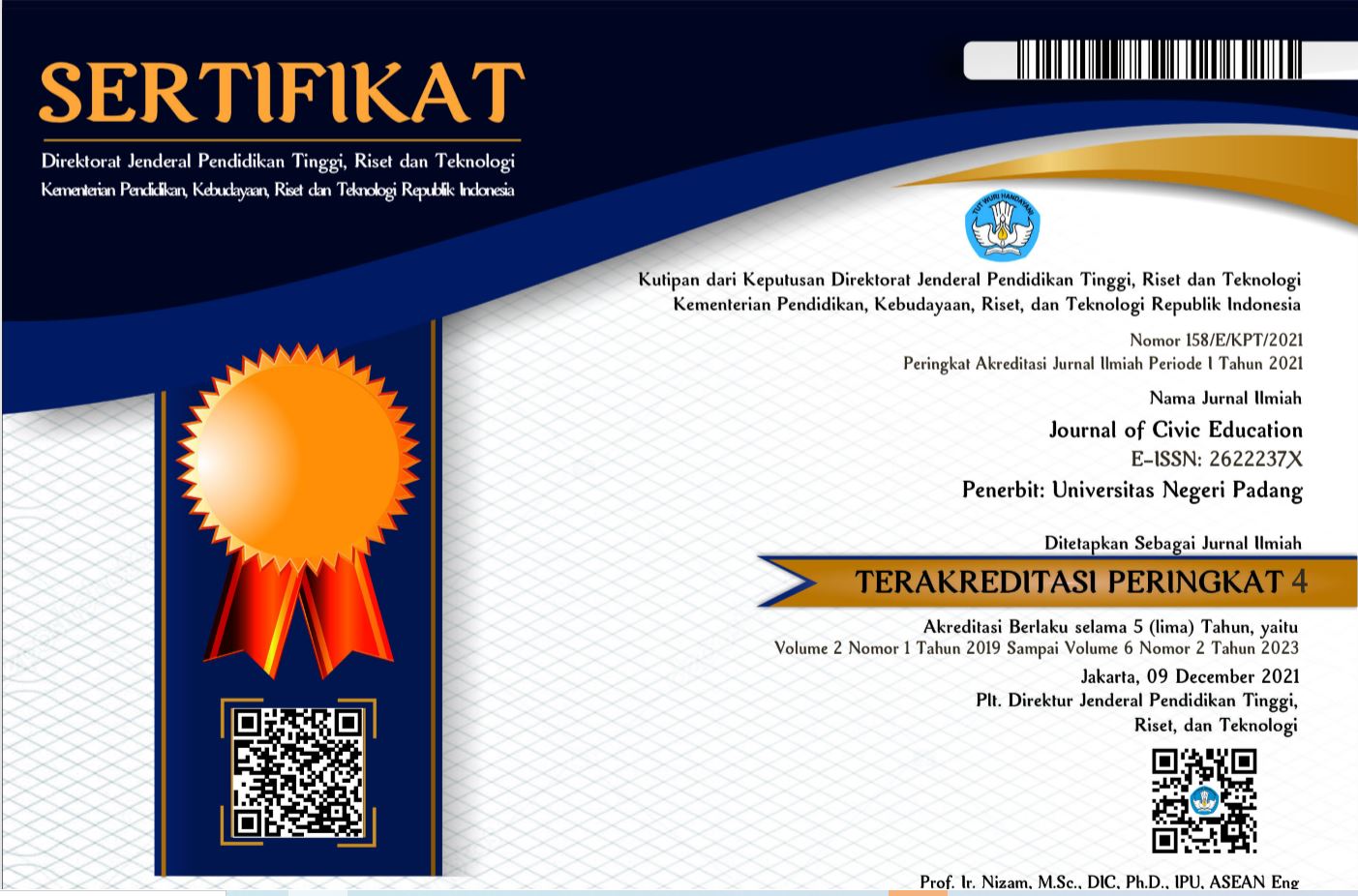Evaluasi Implementasi Sekolah Ramah Anak Menggunakan Pathway Comparison Model
Abstract
This study evaluates the implementation of the Child Friendly School (CFS) program at SMPN 2 Kota Ternate, focusing on analyzing the components of CFS. It employs a qualitative descriptive approach using the Pathway Comparison Model by Kaufman (1990) for evaluation. Data collection techniques include in-depth interviews, observations, and the collection of documentary evidence. The evaluation results indicate that the school has implemented the CFS program with various efforts, such as creating a safe and inclusive learning environment and providing training on children's rights to the educational staff. However, there are several aspects that still require improvement, including the cleanliness of school facilities and the conditions of specific classrooms. Recommendations for improvement encompass strengthening training on children's rights, enhancing the cleanliness of school facilities, renovating classrooms and increasing monitoring and evaluation of the CFS program. The participation of students, parents, and alumni should continue to be promoted through organizations, social media, and regular meetings to support the CFS program.
References
Deputi Tumbuh Kembang Anak. (2020). Panduan Sekolah Ramah Anak (Deputi Tumbuh Kembang Anak (Ed.)). Deputi Tumbuh Kembang Anak.
Inniyah, S., & Mulawarman, W. G. (2021). Evaluasi Pelaksanaan Kebijakan Program Sekolah Ramah Anak pada SMP Negeri 2 Tenggarong dengan Model Evaluasi CIPP. Jurnal Ilmu Manajemen dan Pendidikan (JIMPIAN), 1(2), 39-54.
Kemenpppa. (2015). Panduan Sekolah Ramah Anak (p. 41). Deputi Tumbuh Kembang Anak.
Lexy J. Moleong. (2007). Metodologi Penelitian Kualitatif. PT Remaja Rosda Karya.
Nur Hayati, D., & Handayani, D. (2021). Menciptakan Kesadaran Santri Terhadap Lingkungan Melalui Gerakan Go Green Pondok Pesantren Assa’Idiyah. Jamu : Jurnal Abdi Masyarakat Umus, 2(01), 27–32. Https://Doi.Org/10.46772/Jamu.v1i02.529
Pahlevi, R. (2022, July 29). Berapa Banyak Korban Bullying Di Lingkungan Sekolah Indonesia? Databoks.
Rangkuti, S. R., & Maksum, I. R. (2019). Analisis Implementasi Kebijakan Sekolah Ramah Anak Di SMP Negeri 6 Depok. JPSI (Journal of Public Sector Innovations), 4(1), 8-19.
Putri, A., & Akmal, A. (2019). Sekolah Ramah Anak: Tantangan dan Implikasinya Terhadap Pemenuhan Hak Anak. Journal of Civic Education, 2(3), 228-235.Putri, E. D. (2022). Kasus Bullying Di Lingkungan Sekolah : Dampak Serta Penanganannya. Keguruan: Jurnal Penelitian, Pemikiran Dan Pengabdian, 10.
Wati, E. K., Suyatno, S., & Widodo, W. (2021). Strategi Penerapan Program Sekolah Ramah Anak Di Sd Negeri Kasihan Bantul. Pembelajar: Jurnal Ilmu Pendidikan, Keguruan, Dan Pembelajaran, 5(1). Https://Doi.Org/10.26858/Pembelajar.v5i1.15681
Wulandari, T. (2020). Tesis: Evaluasi Penyelenggaraan Program Sekolah Ramah Anak (Sra). Yogyakarta: Universitas Negeri Yogyakarta
Yosada, K. R., & Kurniati, A. (2019). Menciptakan sekolah ramah anak. Jurnal Pendidikan Dasar Perkhasa: Jurnal Penelitian Pendidikan Dasar, 5(2), 145-154.



